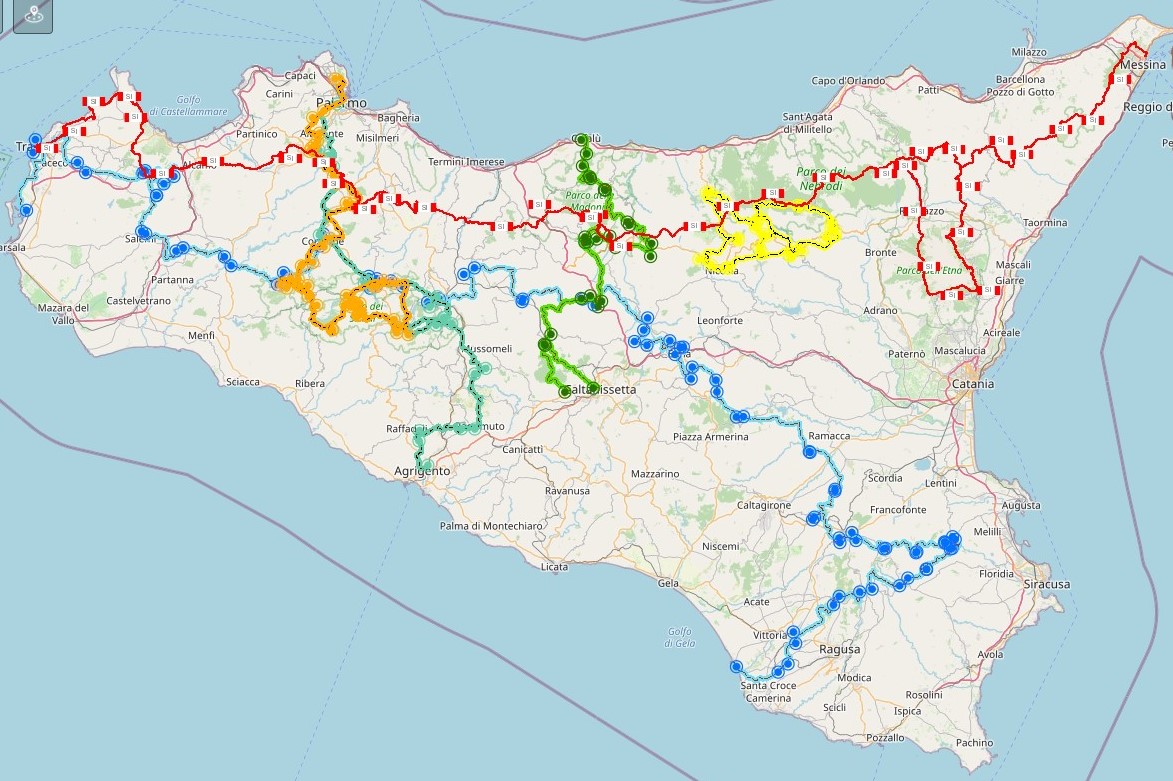The journey of San Japucu
Detail
The journey of San Japucu is a “ring” religious path with the Shrine of San Giacomo in Capizzi, in the province of Messina, as its point of arrival and departure.
The cult of St James is particularly felt in Sicily, which is why, alongside the traditional St James’ Way in the central part of the island, there are others that offer the opportunity to visit beautiful places. Among these, the journey of San Japucu, articulated on a circuit of 10 stages, passes through beautiful scenery immersed in nature, places of art and faith among the most interesting in the province.
We leave and return to the Shrine of San Giacomo Apostolo Maggiore, in Capizzi, a Jacobean site and destination of the island’s oldest pilgrimage. The “Sicilian Compostela” welcomes pilgrims to a Shrine rich in gilded stuccoes and works of art, guardian of the statue of the Apostle James and the ancient sedan-chair (ferculum) in the Oratory of Good Death.
The second stop along this route is Mistretta (ME), in the Nebrodi Park. The historic centre retains its most ancient face, passing dozens of churches and noble palaces. The landscape is a natural oasis that includes the Urio Quattrocchi and the Ciddia waterfalls. Sacred and profane come together in the traditional dance of the Giants of Mistretta.
Among The Most Beautiful Villages in Italy, Sperlinga (EN) is the third stop on the journey of San Japucu. It is famous for the Sperlinga Castle and the Borgo Rupestre, with its typical cave-dwellings carved into the rock, often used as film sets.
San Japucu’s journey then takes us to Nicosia (EN), “City of San Nicolò”, with reference to the patron saint to whom the Cathedral of San Nicola di Bari is dedicated, and “City of the 24 Barons”, evidence of which remains in the numerous noble palaces.
Second among Italy’s Most Beautiful Villages along San Japucu’s journey, the village of Troina (EN) lies in the southern part of the Nebrodi Mountains. Centre of a giudecca and an important Jewish community in ancient times, today its historical centre is rich in churches and preserves the ruins of the Basilian Monastery of San Michele Arcangelo and the Norman Castle.
Passing through Cesarò (ME), we immerse ourselves in the beauty of the Biviere di Cesarò Nature Reserve and Lake Maulazzo. Characterised by Castel Colonna Romano, Castel di Bolo and Palazzo Zito, the village still shows evidence of its medieval past.
The penultimate stop on San Japucu’s journey before returning to Capizzi is the village of Cerami, in the province of Enna. Located in the Valley of the Menhirs, the prehistoric monoliths on the slopes of Mount Mersi (3rd millennium B.C.), it boasts dozens of churches and the famous Ponte Vecchio, dating from the Norman period, one of the most important crossroads in medieval Sicily.
Regional web map of paths and routes for soft mobility realised by LabGis Osservatorio Turistico della Regione Sicilia, in collaboration with FIAB Sicilia and CAI Sicilia.
Share this content!
LOCATION
DURATION
Distance
Difficulty
Medium
Categories
AROUND







